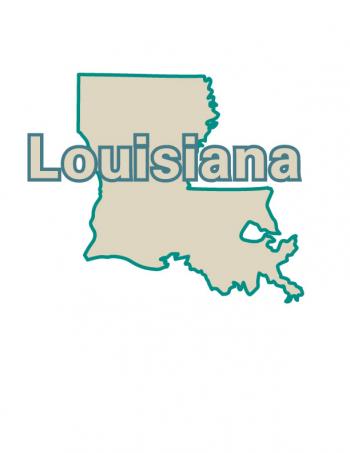
Acadian Settlement Centered on Church
By JIM BRADSHAW
When the first Acadian exiles began to come to Louisiana, most of them settled along the Mississippi River near what is today the town of St. Gabriel in Iberville Parish. They built a church there that still stands, and the settlement that stretched from the church in either direction along the river came to be known as La Cote des Acadiens, the Acadian Coast.
Most of Louisiana was owned by Spain at the time, but the British had an outpost that touched the Mississippi River at Baton Rouge. An early map of the Acadian settlement shows the English Fort Bute and the Spanish Fort St. Gabriel facing each other across Bayou Manchac as it branches from the Mississippi.
The original map is undated, but according to research by David Broussard of the Old St. Gabriel Church Committee, “some clues are available” about when it was drawn up.
“Letters and census documents from the Iberville district show many more inhabitants (than are on the map) in the area by 1771,” Broussard says. “The names of settlers from the abandoned Fort San Luis de Natchez show up on these census records. None of these names are on the map. The San Luis settlement was abandoned in late 1769. … Thus the map most likely dates from 1767 to 1769.”
The church is situated in the center of the map. Names on the map heading upriver (toward Baton Rouge) from the church include Joseph Richard, Bonaventure LeBlanc, Pierre Allain, Genevieve Hebert, Jean Baptiste Babin, Marie Trahan, Francois Hebert, Amand Hebert, Alexandre Hebert, Pierre Landry, Marie Grance, Athanase Landry, Paul Hebert, Pierre Hebert, Joseph Dupuis, Amand Melancon, Augustin Landry, Joseph Babin, Diego Arnanze, Ignace Hebert, Joseph Castille, and Jean LeBlanc.
Settlers on the downriver side of the church (toward New Orleans) were Amand Richard, Ignace Babin, Marie Babin, Pierre Babin, Marie Richard, Jean Baptiste Forest, Bonaventure Forest, Pierre Forest, Angelme Blanchard, Rene Blanchard, Joseph Blanchard, Anne Landry, Francoise Landry, Pierre LeBlanc, Anselme Belisle, Hiacente Landry, Jean Baptiste Landry, Joseph Hebert, Joseph Landry, Jean Landry, Mathurin Richard, Pierre Brasseur, Isabelle Brasseur, Paul Boutin, Charles Comeau, and Pierre Lormier (maybe Cormier?).
The church was built on land originally granted to Pierre Babin, but in October 1770 he asked the government for compensation for clearing the land where the church was built. He said in his petition that the Acadian community decided that his land was the most favorable site for a church. A letter written in 1772 refers to the church “rising on the site of Pierre Babin.”
The original church was moved at least once because of rising water, and a dispute arose as the population spread onto both side of the river about which bank it should be on.
According to Broussard’s research, “On two separate occasions the governor had to settle squabbles between the left bank and the right over the location of the new church.
“In 1774, before the church was built and after the presbytere had been completed, the west bank settlers petitioned the governor to have the church moved to the other side of the river. Gov. Luis Unzaga stood firm on what had already been decided … and ordered the Acadians to get on with the construction of the church has planned.
“Then in 1781, after the church was completed, the east bank settlers petitioned Gov. Bernardo de Galvez to stop secretive efforts by the commandant and the west bank settlers to move the church to the other side of the river. Galvez replied by re-issuing Unzaga’s 1774 orders.”
When fortunes began being made from sugar cane, rich Americans bought out most of the Acadian settlers, who moved along Bayou Lafourche and across the Atchafalaya Basin.
You can contact Jim Bradshaw at jhbradshaw@bellsouth.net or P.O. Box 1121, Washington LA 70589.
- Log in to post comments
